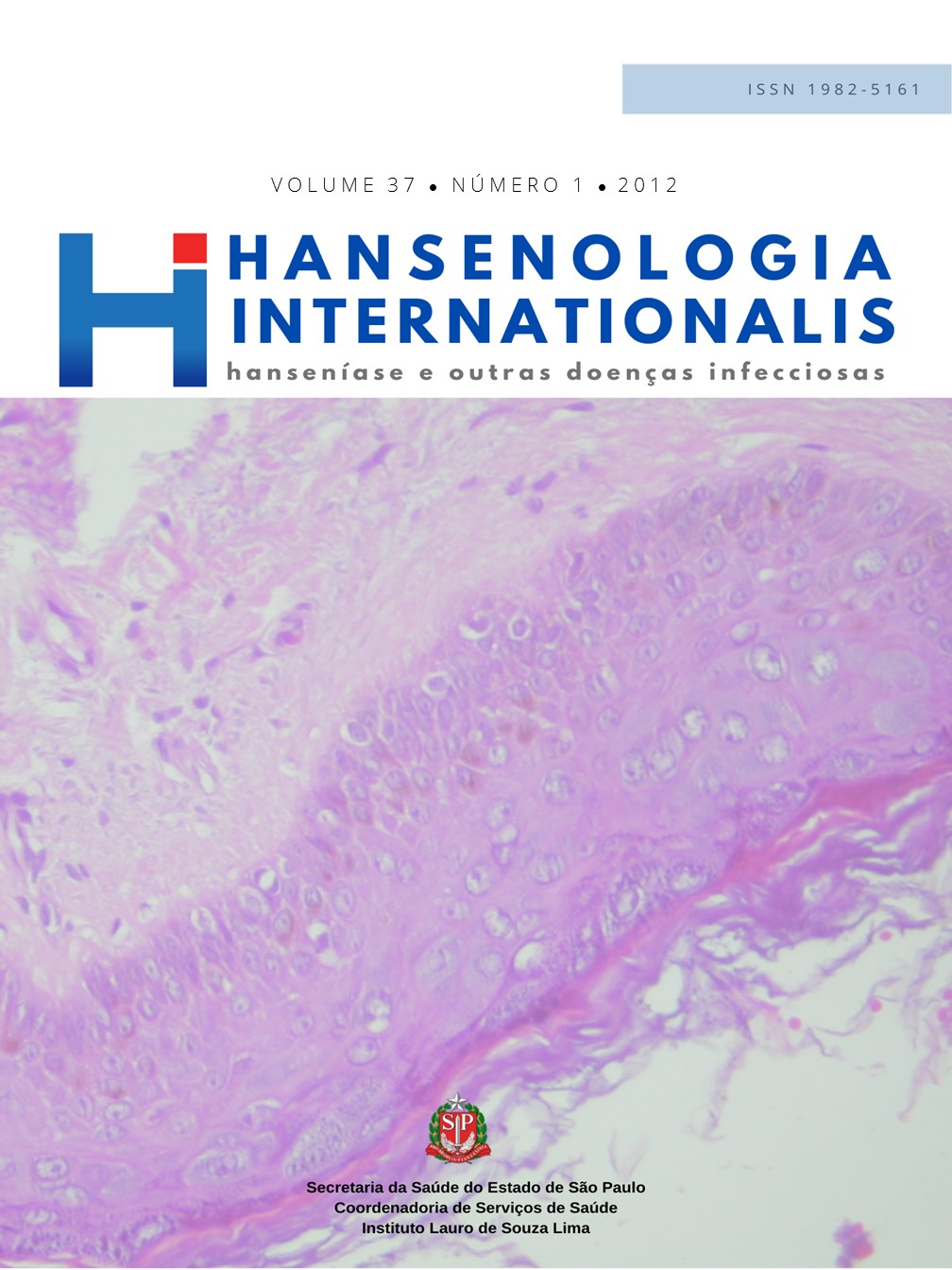Resumo
Na hanseníase as úlceras podem surgir, principalmente, pelo fato de existirem áreas anestésicas, que com facilidade podem ser traumatizadas, queimadas e secundariamente infectadas. Este estudo teve por objetivo tratar as úlceras de membro inferior de pacientes com seqüelas de hanseníase por meio do implante de queratinócitos autólogos. Participaram 14 pacientes, sendo seis com uma única úlcera, quatro com mais de uma úlcera no mesmo membro inferior e quatro com úlceras nos dois membros, totalizando 31 úlceras. Um fragmento de pele sadia foi coletado e submetido à digestão enzimática para obtenção dos queratinócitos, que foram cultivados em meio específico, por quatro semanas. Os queratinócitos foram implantados nas úlceras em associação com cola de fibrina, as quais foram acompanhadas semanalmente, por dois meses. As úlceras cujas medidas eram ≤ a 9,0 cm de altura x 5,0 cm de largura (total de 23 úlceras) tiveram redução de tamanho em 68,8 ± 27,1%, sendo que nove delas apresentaram cicatrização total; àquelas com tamanho superior a esta medida diminuíram 50,0 ± 31,9%, sendo que duas cicatrizaram totalmente. Assim, o implante de queratinócitos autólogos em associação com cola de fibrina se mostrou eficaz na cicatrização e/ou redução do tamanho das úlceras e constitui mais uma opção de tratamento para úlceras de pacientes com seqüelas de hanseníase.
Referências
2 Opromolla DVA. Úlceras da Perna. In: Jorge AS, Dantas SRPE. Abordagem Multiprofissional do Tratamento de Feridas. São Paulo: Editora Atheneu; 2003. p. 271-8.
3 De Las Aguas JT. Ulceraciones en la lepra. Tratamiento. Leprologia 2001; 4: 248-56.
4 Valvi-Nagy IT, Murphy GF, Mancianti ML, Whitaker D, Herlyn M. Phenotypes and interactions of human melanocytes and keratinocytes in an epidermal reconstruction model. Lab Invest 1990; 62: 314-24.
5 Regnier M, Patwardhan A, Scheynius A. Reconstructed human epidermis composed of keratinocytes, melanocytes and Langerhans cells. Med Biol Eng Comput 1998; 36: 821-4.
6 Carsin H, Ainaud P, Le Bever H, Rives J, Lakhel A, Stephanazzi J, et al. Cultured epithelial autografts in extensive burn coverage of severely traumatized patients: a five year single--center experience with 30 patients. Burns 2000; 26: 379-87.
7 Villeneuve P, Hafner J, Prenosil JE, Elsner P, Burg G. A novel culturing and grafting system for the treatment of leg ulcers. Br J Dermatol 1998; 138: 849-51.
8 Terskikh VV, Vasiliev AV. Cultivation and transplantation of epidermal keratinocytes. Int Rev Cytol 1999; 188: 41-72.
9 Siedler S, Schüller-Petrovic S. Allogenic keratinocytes suspended in human fibrin glue used for wound healing support in chronic leg ulcers. Arch Dermatol 2000; 136: 676-8.
10 Puzzi MB, Rehder J, Souto LRM, Santos MAG. Implant of autologous fibroblast and keratinocytes in skin ulcers of patients with sickle cell anaemia. In: 4º International Symposium; Reims; 2002.
11 Phillips TJ, Kehinde O, Green H, Gilchrest BA. Treatment of skin ulcers with cultured epidermal allografts. J Am Acad Dermatol 1989; 21: 191-9.
12 Siddiqui MR, Moreira AL, Negesse Y, Taye GA, Hanekon WA, Haslet PAJ, et al. Local nerve in damage leprosy does not lead to an impaired cellular immune response or decreased wound healing in the skin. J Infect Dis 2002; 186: 260-5.
13 Salazar JJ, Serrano GG, Leon-Quintero GI, Torres-Mendonza BM. Use of topical ketaserin for treatment of ulcers in leprosy patients. Indian J Lepr 2001; 73: 103-10.
14 Nelzén O, Bergqvist D, Lindhagen A. Venous and non venous leg ulcers: clinical history and appearence in a population study. Br J Surg 1994; 81: 182-7.
15 Kunst H. Predisposing factors for recurrent skin ulcers in leprosy. Lepr Rev 2000; 71: 363-8.
16 Cardia COC. Use of skin graft “punch graft” type for the healing of leg ulcers in treated Hansen’s disease patients. J Venom Anim Toxins incl Trop Dis 2006; 12: 316.
17 Trier WC, Peacock EE, Madden JW. Studies on the effectiveness of surgical management of chronic leg ulcers. Plast Reconstr Surg 1970; 45: 20-3.
18 Ceilley RI, Rinek MA, Zuehlke RL. Pinch grafting for chronic ulcers on lower extremities. J Dermatol Surg Oncol 1977; 3: 303-9.
19 Limat A, French LE, Blal L, Saurat JH, Hunziker T, Salomon D. Organotypic cultures of autologous hair follicle keratinocytes for the treatment of recurrent leg ulcers. J Am Acad Dermatol 2003; 48: 207-14.
20 Li J, Chen J, Kirsner R. Pathophysiology of acute wound healing. Clin Dermatol 2007; 5: 9-18.
21 Rothe M, Falanga V. Growth factors. Their biology and promise in dermatologic disease and tissue repair. Arch Dermatol 1989; 125: 1390-8.
22 Yager DR, Nwomeh BC. The proteolytic environment of chronic wounds. Wound Rep Reg 1999; 7: 433-41.
23 Cavallini M. Autologous fibroblasts to treat deep and complicated leg ulcers in diabetic patients. Wound Rep Reg 2007; 15: 35-8.
Este periódico está licenciado sob uma Creative Commons Attribution 4.0 International License.
